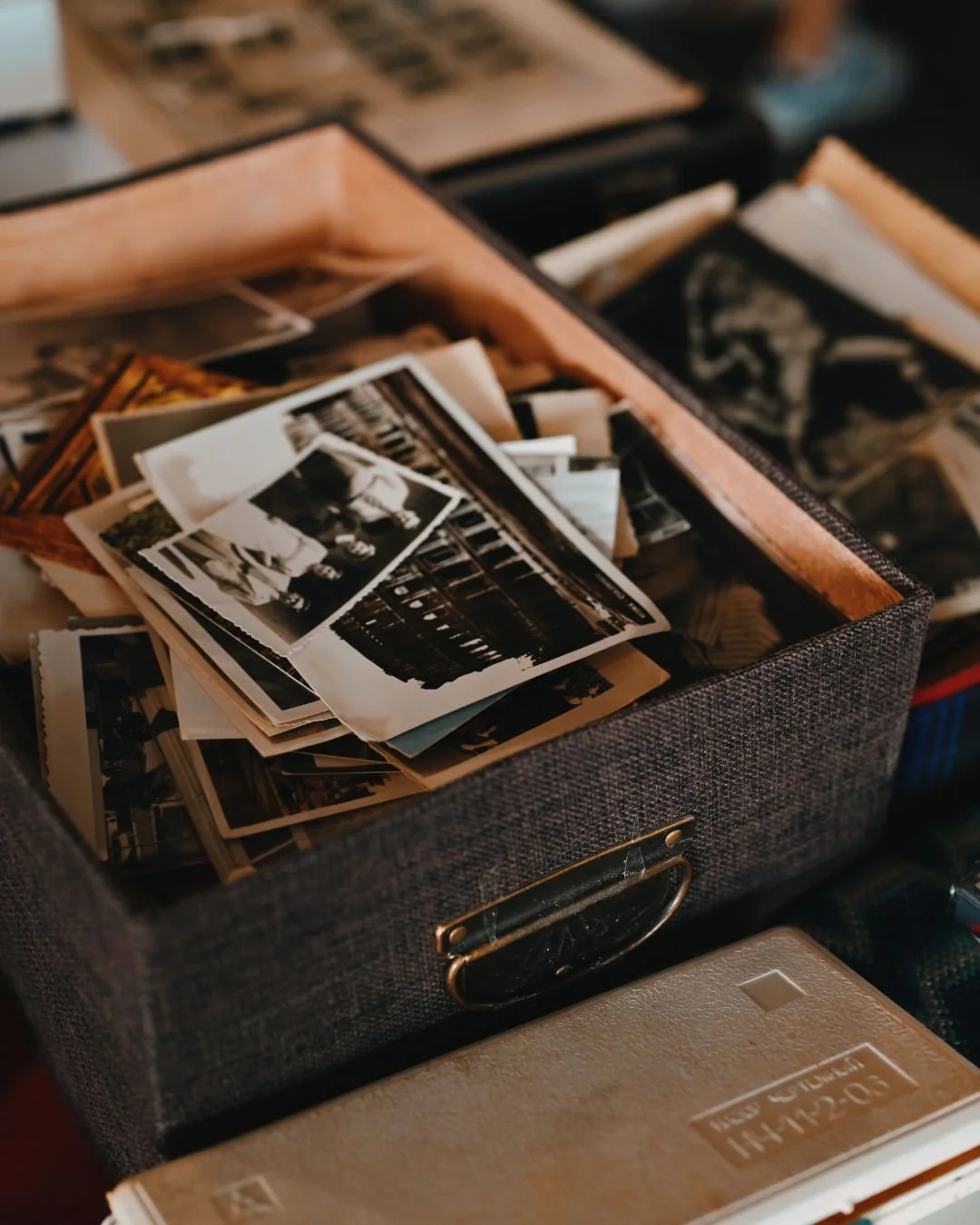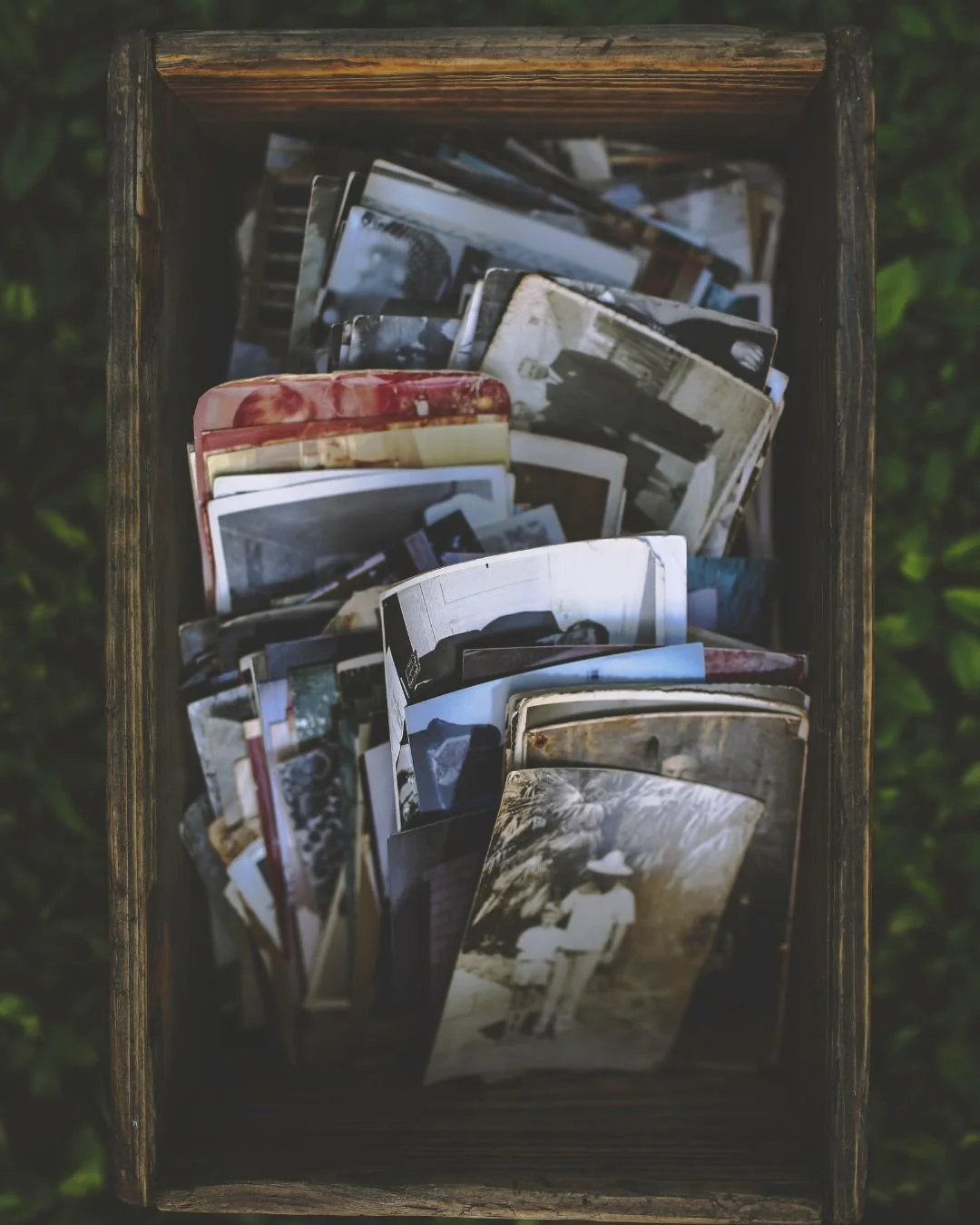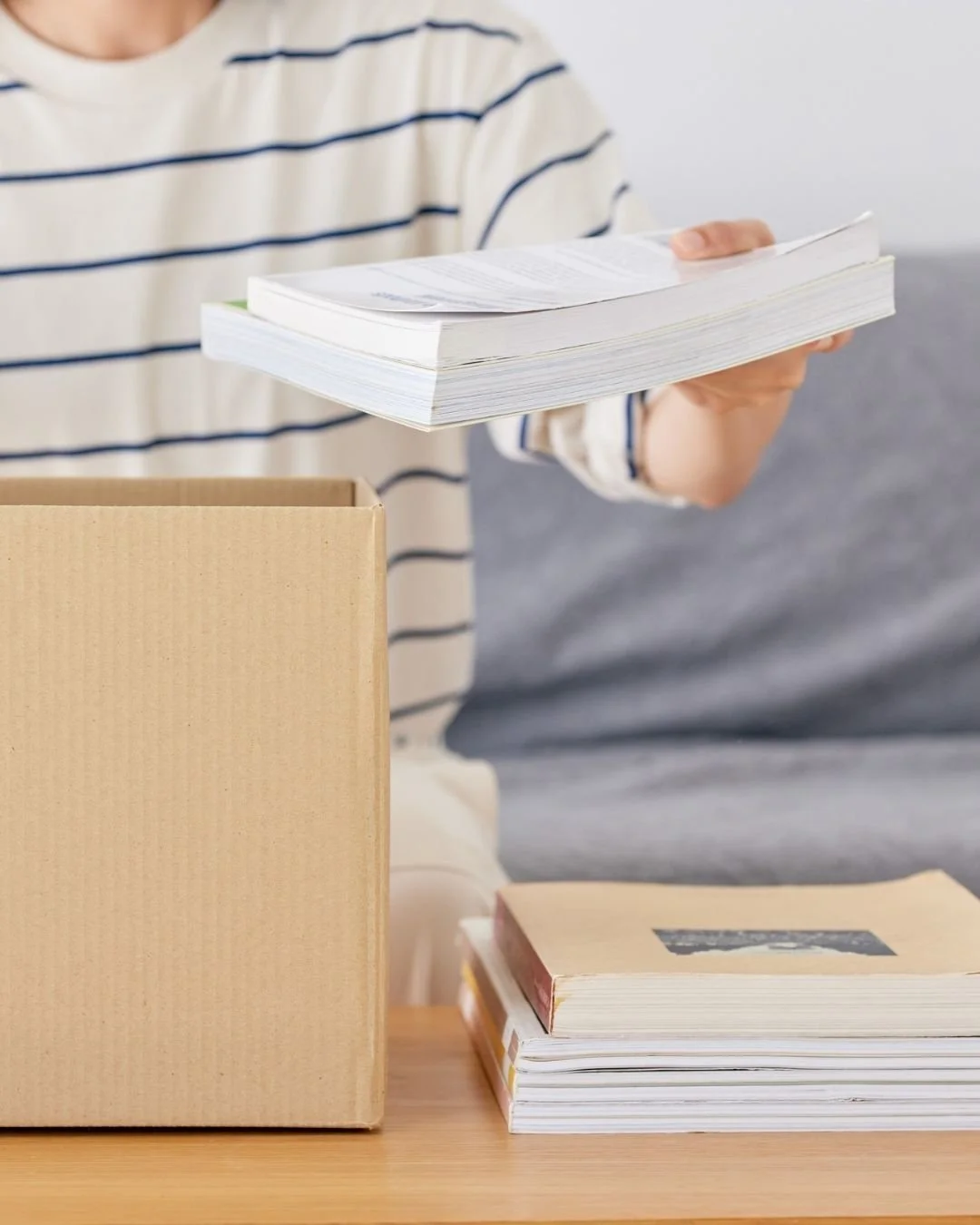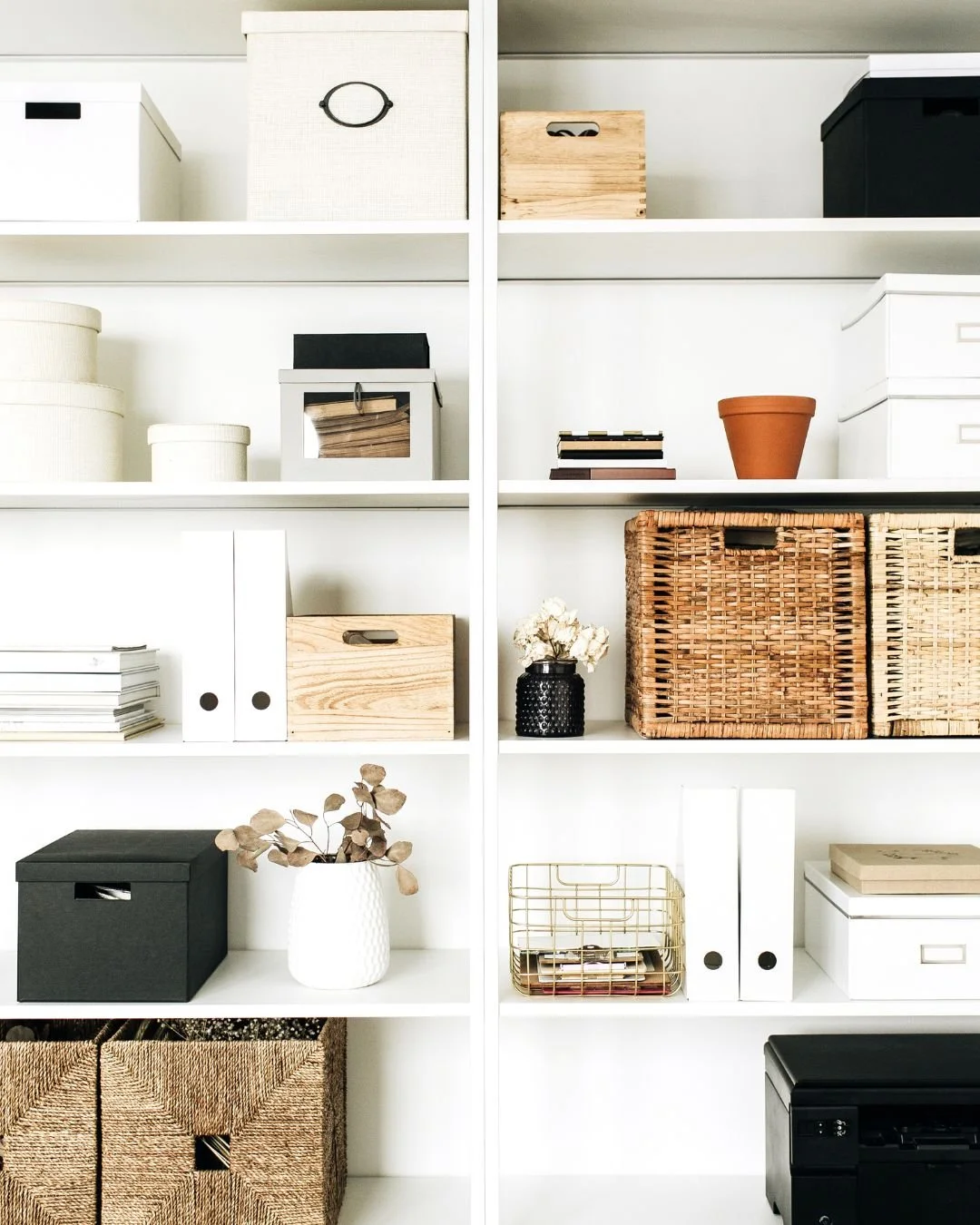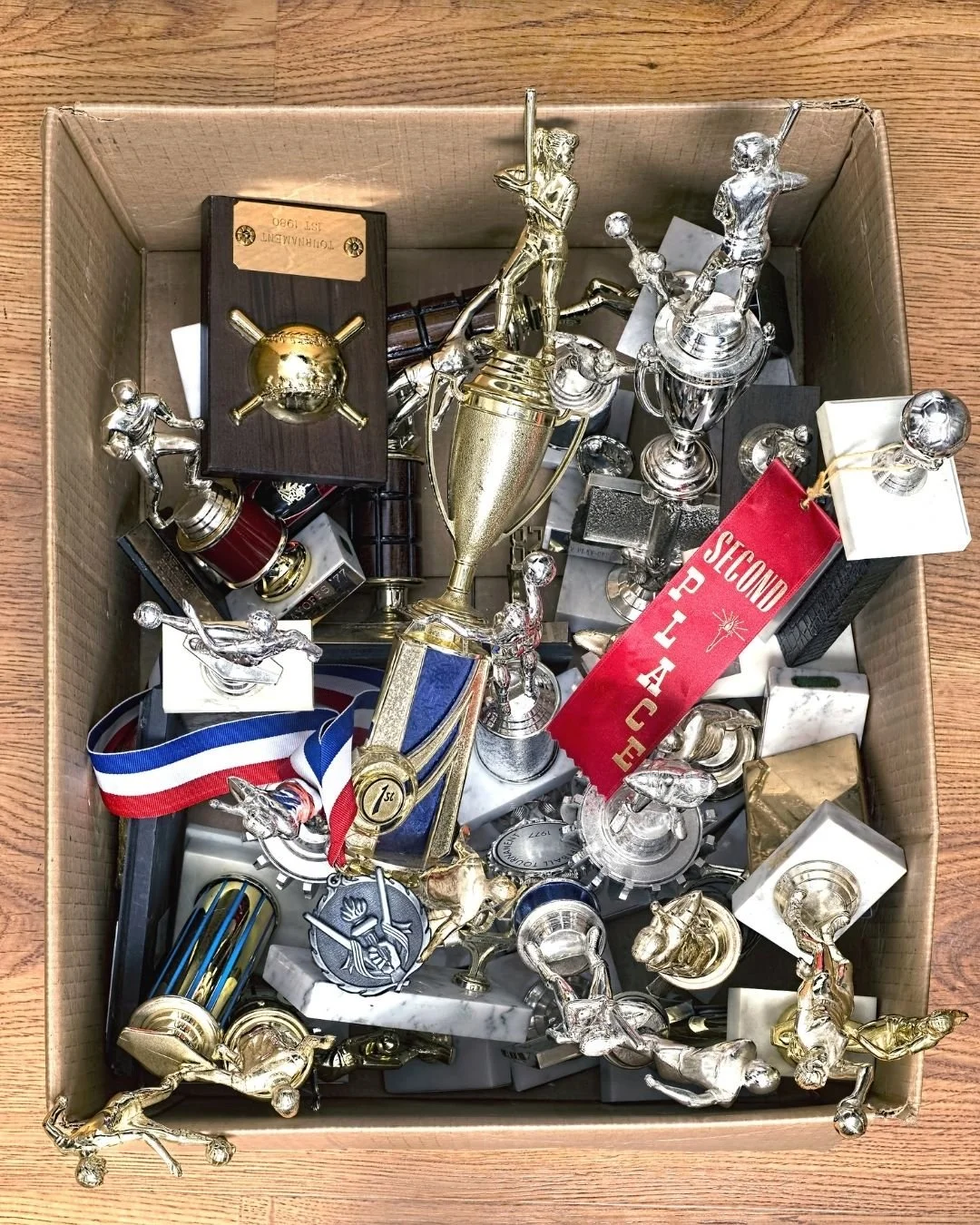How to Organize Memorabilia and Photos: An OT's Guide to Preserving Memories Without the Overwhelm
There's something about fall (especially here in Portland, Oregon!) that makes you feel like nesting. The rain starts, the leaves turn, and soon I find myself spending more time indoors than I am outside. And you know what? That's exactly when my clients start reaching out about those boxes.
You know the ones. The boxes of old photos in the basement. The bins of your kids' artwork that are taking up half the garage. The random keepsakes you've been meaning to "deal with" for... well, years.
Organizing memorabilia isn't just about making your space “look better.” As an Occupational Therapist (OT), I see every day how physical clutter affects our mental space. It impacts how we process information, how we make decisions, and how we feel when we walk into a room. When you're neurodivergent, especially if you have ADHD, that impact is even bigger.
So this fall, let's actually tackle it! Not in a marathon weekend that leaves you exhausted and emotional, but in a way that actually works with how your brain functions.
Start Small (I Mean Really Small)
The biggest mistake I see on a regular basis? People dump out every photo box they own onto the living room floor and then sit there, paralyzed, for three hours.
Instead, try this: Set a timer for 15-30 minutes. Pick one box, not all of them, just one, and start there.
This approach is called “grading the activity" in OT, and it's a game-changer for making big projects manageable. Each short session is like a rep at the gym. You're building confidence and momentum without flooding your system. My clients with ADHD especially find this helpful because it prevents decision fatigue and keeps the task from feeling impossible.
Once you start, you'll most likely want to keep going. But having that timer gives you permission to stop, which paradoxically makes it easier to begin.
Get Everything in One Place (Eventually)
Before you can organize anything, you need to see what you're actually working with. But… and this is important!... you don't have to do this all at once.
Over the course of a week or two, gather memorabilia from around your house:
Those boxes in the closet
The bins in the garage or basement
Random piles on your desk
Old photo albums on bookshelves
Sentimental items tucked into drawers
Bringing everything together helps your brain understand the full scope. Instead of making scattered decisions in different rooms, you're reducing cognitive load by working in one central location.
Set Up Your Sorting Station
This is where we get practical. You need a space you can leave set up for a while… like a guest room, a corner of your office, even a card table if that's what you've got.
Here's what I recommend having on hand:
Clear plastic bins with latching lids are essential. I cannot overstate this. The clear part lets you see what's inside without opening every single container (huge for ADHD brains), and the latching lids keep everything secure. My clients find these especially helpful because there's no guessing game later.
Sticky notes and a Sharpie for quick labeling as you sort. These external cues mean your brain doesn't have to hold everything in working memory.
A photo storage box for organizing prints by year, event, or family member. These keep photos safe and make them actually accessible, which means you'll actually look at them.
Garbage bags for recycling, shredding, and donations.
A flat surface where you can spread things out and see what you're working with.
Having these tools ready before you start makes the whole process smoother!
Sort Into Categories (But Keep It Simple)
Start with just one box. Pull out items and sort them into broad categories:
Photos
Papers (cards, certificates, artwork, letters)
Objects (baby clothes, trophies, stuffed animals)
That's it for round one! Don't try to subcategorize everything immediately. That's how you end up with 47 piles and no idea what to do next.
Once you've made your broad categories, then you can refine:
Photos by person, year, or event
Papers by child or milestone
Objects by family member
This is “chunking,” an OT strategy that organizes information into natural groupings. It makes everything easier for your brain to process now and find later.
The Part Where You Actually Let Things Go
This is hard. I know it's hard. You're going to come across your daughter's first Mother's Day card, or a photo from a trip you took twenty years ago, or your son's beloved stuffed elephant that's missing an ear.
But here's what I remind my clients: keeping everything doesn't honor the memories more. It just makes your home heavier.
Ask yourself “does this item add value or meaning to my life right now?”
Let go of:
Duplicate photos (especially the blurry ones)
Artwork that is falling apart or doesn't represent a specific memory
Random memorabilia that no longer reflects who you or your kids are
And if you're really struggling? Take a photo of the item before you release it. Create a folder on your phone called "Memorabilia" and store the pictures there. You keep the memory, lose the clutter.
Store What Matters (In a Way You Can Actually Use)
Now we get to the good part… giving your treasures a real home.
For photos, those photo storage boxes I mentioned are perfect for everyday prints. Label them clearly: by year, by kid, by event. Whatever system makes sense to your brain. My clients appreciate that these boxes stack neatly and you can actually see what's labeled without pulling everything off the shelf.
For papers like artwork and certificates, file boxes with folders work beautifully. One folder per child per year, or however you want to organize it.
For objects, those clear latching bins are wonderful. Give each family member their own bin for special keepsakes. The clear sides mean your daughter can look through her bin without dumping everything out. The latches mean it stays closed when stacked.
Everything gets labeled. Use a label maker if you have one (this one is my all-time favorite), or just good old masking tape and a Sharpie. The label is the external cue that helps everyone (including you) know where things belong.
Consider Going Digital
Scanning photos might sound like a whole other project. But it can actually lighten the load significantly!
If you've got a lot of photos to preserve, a photo scanner can be a solid investment. The newer ones are surprisingly easy to use, you just feed photos through and they save directly to your phone or computer.
For artwork and papers, you can photograph them with your phone and save to the cloud. Then consider making annual photo books with the highlights.
And here's something I love recommending: a Skylight digital picture frame. This is especially great if you have family members who'd love to see photos but don't live nearby. You can upload pictures remotely, so your parents or grandparents get to see new memories without you having to print and mail anything. It's a way of keeping memories active and shared, not just boxed up.
If scanning feels overwhelming, there are services across the country that specialize in digitizing old photos and memorabilia. Sometimes outsourcing that step is exactly what makes the whole project feel doable.
When the Emotions Hit
Let's talk about this openly: organizing memorabilia is emotional work. You're going to cry. You're going to laugh. You're going to feel grief for time that's passed and joy for memories you'd forgotten.
This is normal. This is part of why it matters.
Here's how to take care of yourself:
Stick to those short sessions so you don't get emotionally flooded
Let yourself reminisce – telling stories is how we honor what was
Invite someone supportive to sit with you if it feels hard
Take breaks
Be gentle with yourself
As an OT, I see this all the time: people think they're "just organizing," but really they're processing their family's story. That takes emotional energy. Give yourself credit for doing hard, meaningful work.
Make It a Ritual (Not Another Chore)
Once your systems are in place, revisit them once or twice a year. Pull out those bins with your kids or partner. Look through photos together. Laugh over old birthday parties and terrible haircuts.
This kind of ritual strengthens family bonds and keeps clutter from accumulating again. Plus, it gives your memorabilia a purpose; they're not just stored, they're celebrated.
You Don't Have to Keep Everything to Keep the Memory
Keeping what brings joy and meaning, releasing what doesn't. That's not being disrespectful to the past. It's making space for the present.
Your home should support your life now, not be a museum for a life you used to live.
Organizing memorabilia is about creating systems that work with your brain, not against it. Whether you're neurodivergent, overwhelmed, or just tired of tripping over boxes in the garage, you deserve a home where your memories have a place, and where you can actually find and enjoy them.
This season, give yourself permission to start small, feel your feelings, and let go of what no longer serves you. Your family's story deserves to be honored in a way that brings peace, not stress.
Need help organizing your Portland, Oregon home?
I offer both in-person and virtual home organization services, with a special focus on ADHD-friendly systems. Let's create a home that actually works for your brain.

